TABLE OF CONTENTS
Are Founders Edition GPUs any good? If so, are they worth picking over other GPU options?
Today, I’m going to teach you everything you need to know about Founders Edition graphics cards, and by the time I’m done, you’ll know for sure whether or not you should pick one.
What is a Founders Edition GPU?
Before I properly explain what a Founders Edition GPU is, it’s important to understand how graphics cards are distributed.
While all current PC graphics cards are manufactured by Nvidia or AMD (eventually Intel), you’ll most likely be buying the graphics card from one of their hardware partners rather than AMD or Nvidia themselves.
For non-Founders Edition graphics cards, the process goes something like this:
- Nvidia manufactures the GPU. Not the full graphics card, but rather the necessary GPU chip for the graphics card to function.
- Once the GPU has been manufactured, it’s sent to something called an AIB (Add-In Board) Partner. These are your GPU brands like EVGA and Gigabyte.
- Once the AIB Partner in question has the chip, they can do what they want with it before putting out a card (within limits). This means adding their own cooling to it, binning chips for higher-end overclocked versions of the graphics card, and so on.
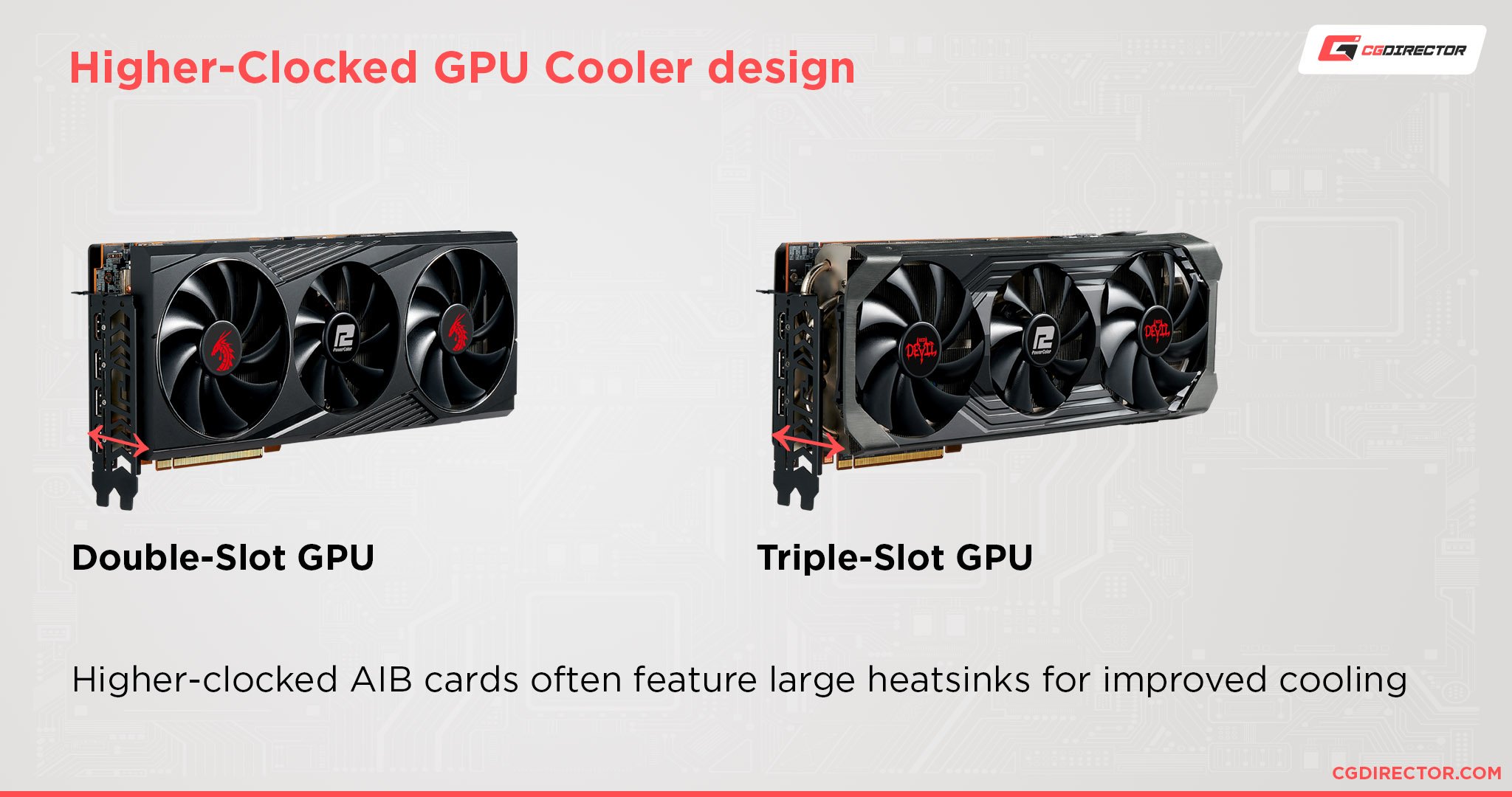
With a Founders Edition graphics card, the process instead goes like this:
- Nvidia manufactures the GPU, and “bins” some high-quality chips. The ones they don’t keep for themselves go to AIB partners in the process described above.
- Once Nvidia has their ideal chips, they can slap them into their own Founders Edition cards with their custom cooling setup.
Additionally, these Founders Edition cards will often run at higher clocks than the “reference” spec that is sent to AIB partners, but AIB partners tend to overclock and tweak their cards anyways. - Since there is no longer a middle man, Nvidia is now free to sell their Founders Edition graphics cards and pocket more of the profit than they would if an AIB partner sold it instead.
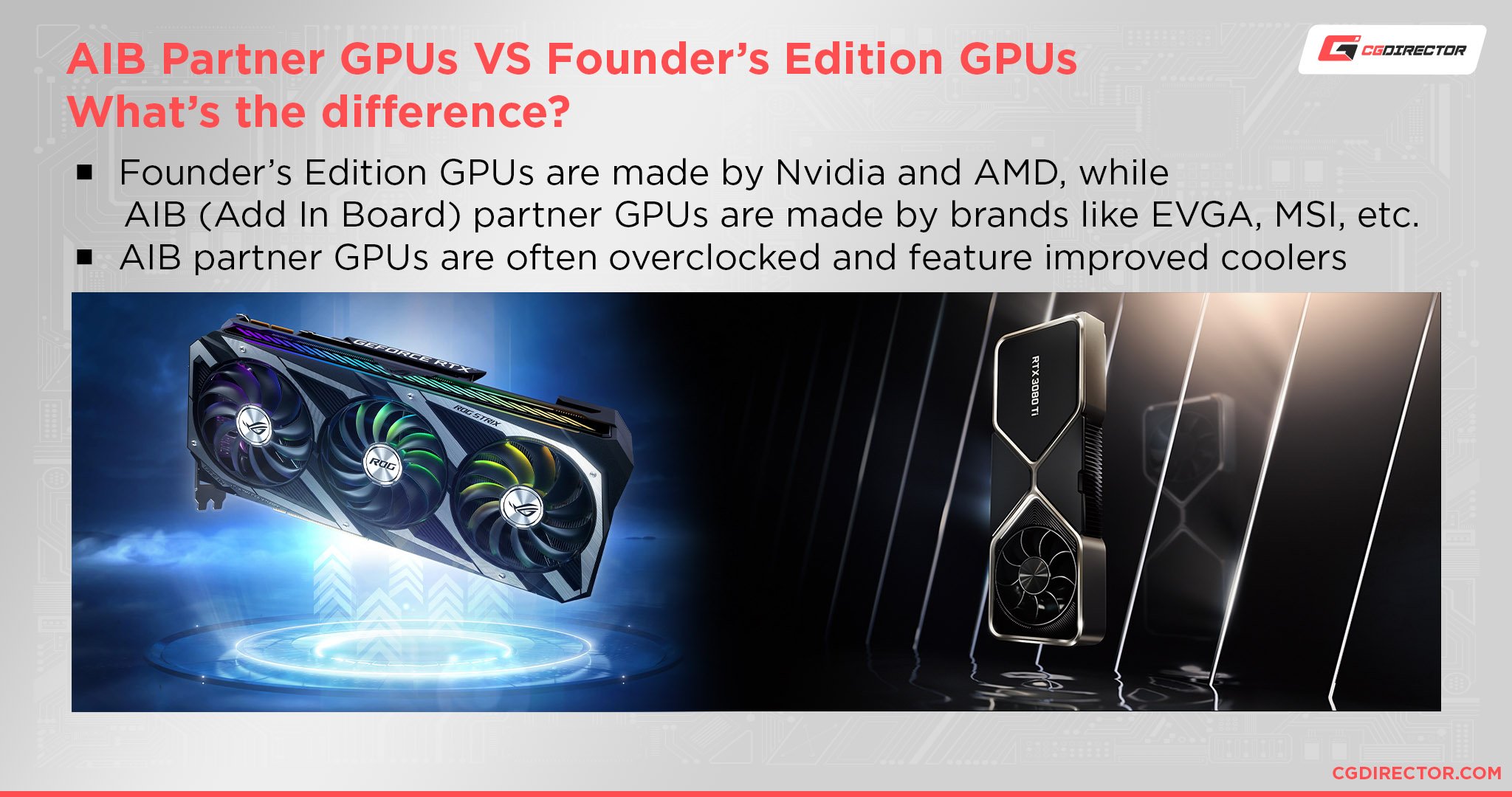
So basically, a Founders Edition GPU is a GPU that you buy directly from Nvidia rather than a partner. This is similar in concept to buying a reference design or “stock” GPU, but those are actually meant to be as cheap as possible.
In contrast, since Nvidia launched the Founders Edition line in 2016, Founders Edition cards are instead seen as premium products with a markup from the base GPU’s MSRP.
Does AMD Have Founders Edition GPUs?
No.
While AMD does have reference design cards that it sells directly to consumers, they have no marketing or price markup compared to non-reference cards.
This is how Nvidia used to do things prior to the GTX 10-series’ release in 2016, but since then only AMD has been carrying the torch of selling cheap reference design cards directly to consumers.
This doesn’t make buying reference GPUs from AMD an inferior option by any means, though, especially not if you’re picking a card that’s outperforming a similar Nvidia option for the price.
Are Founders Edition GPUs Always Blower-Style?
A common myth these days is that all Founders Edition graphics cards are blower-style, but this is a myth that’s actually rooted in some fact.
While this is no longer the case, there was a time when both Nvidia and AMD’s stock designs were only blower style, rather than open-air or any kind of alternatives.
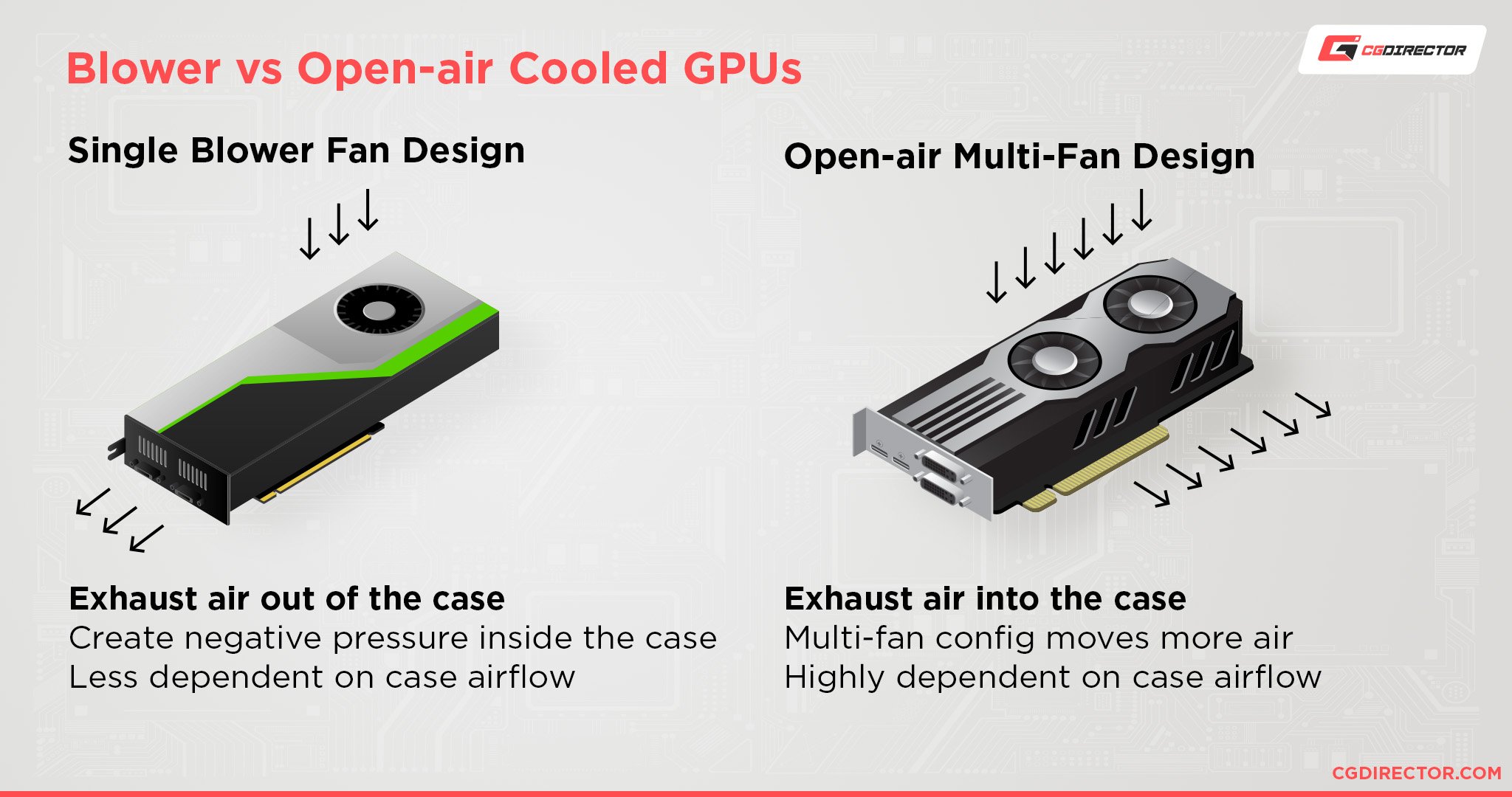
Starting with the RTX 20 series’ release, Nvidia began using a dual-fan open-air cooling design for their Founders Edition graphics cards instead of their previously-traditional blower-style cooler design.
The RTX 30 series still uses dual fans, but is something of a hybrid between the two styles of design, since one fan serves to exhaust air out of the case while another serves to push air up through the heatsink (and exhaust some heat into the case).
There are some mixed pros and cons to adopting an open-air design over a blower-style design.
For a well-ventilated, non-Mini ITX case, an open air styled graphics card will generally be preferred.
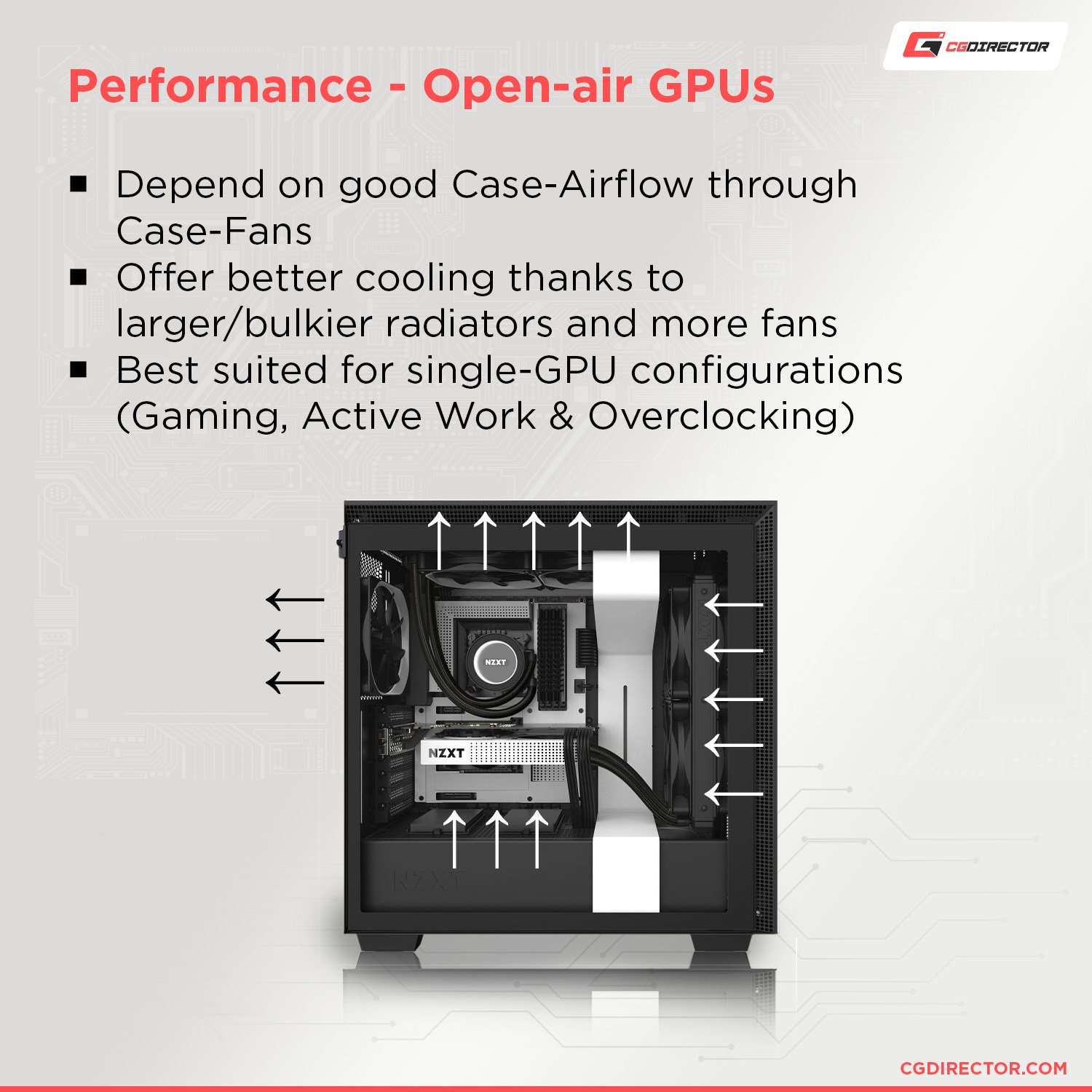
Open-air graphics cards tend to run a little quieter, colder, and faster than their blower-style counterparts, especially with the factory overclocking that’s common from both Nvidia and other GPU providers.
However, there are scenarios where a blower-style graphics card is better than an open-air alternative.
If you’re building in a Mini ITX case or hoping to run a multi-GPU setup (both scenarios where an open-air card would be choked of airflow and exhaust more heat into the rest of the PC/components), a blower-style graphics card will actually run much cooler.
This is because the two different styles of graphics card cooling get rid of heat differently.
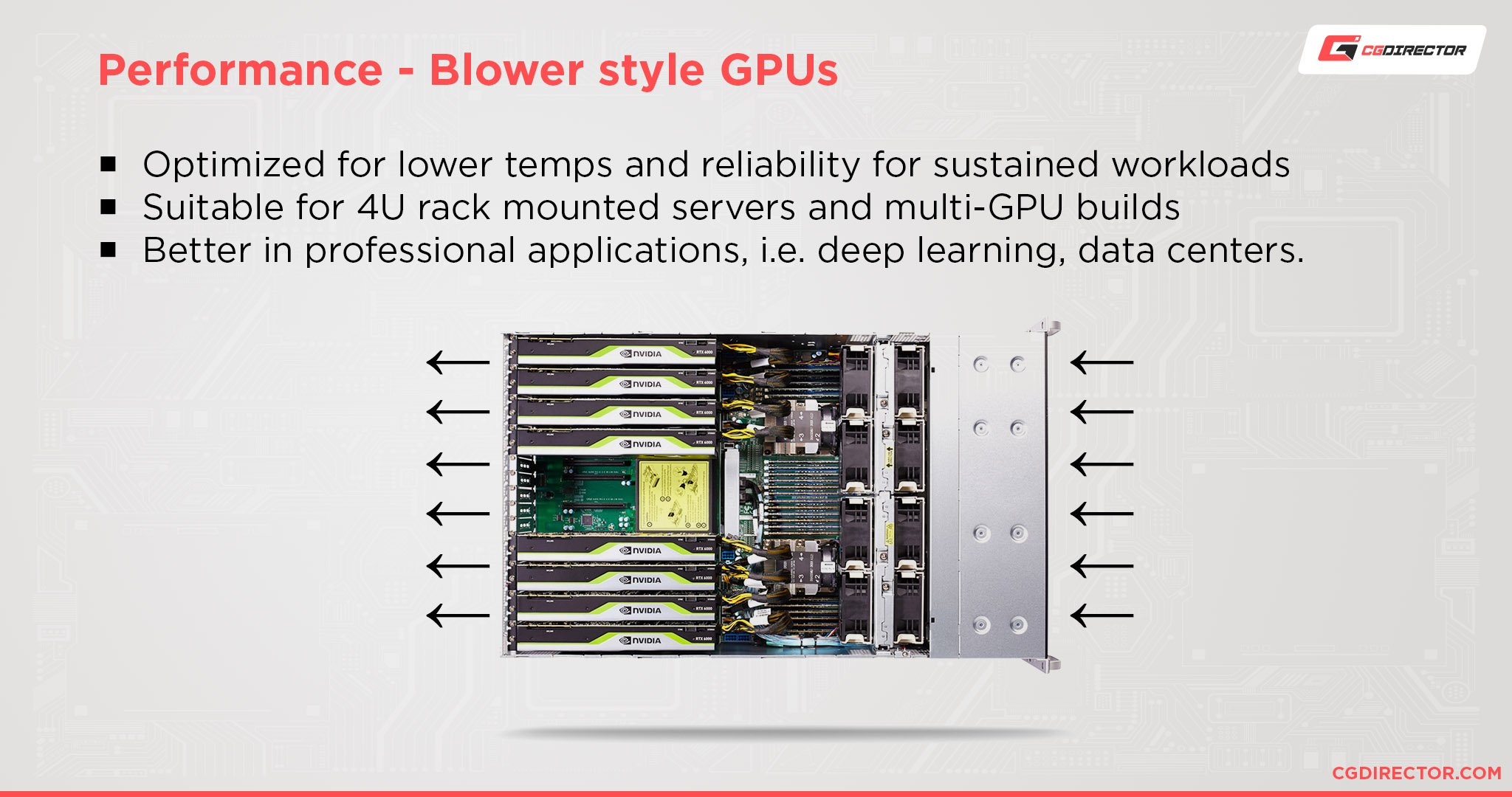
An open-air graphics card gets rid of heat by exhausting it in pretty much every direction after taking in cool air from the fans. This is fine in a larger case with good airflow, but becomes problematic if the cooling fans don’t have sufficient room to breathe.
Additionally, if your airflow isn’t up to par, you run the risk of your graphics card making other components in your system run hotter, since it’s heat isn’t being effectively dissipated from your machine.
Meanwhile, a blower-style graphics card intakes all of its air from a single fan…and exhausts it all in one go, outside of the case.
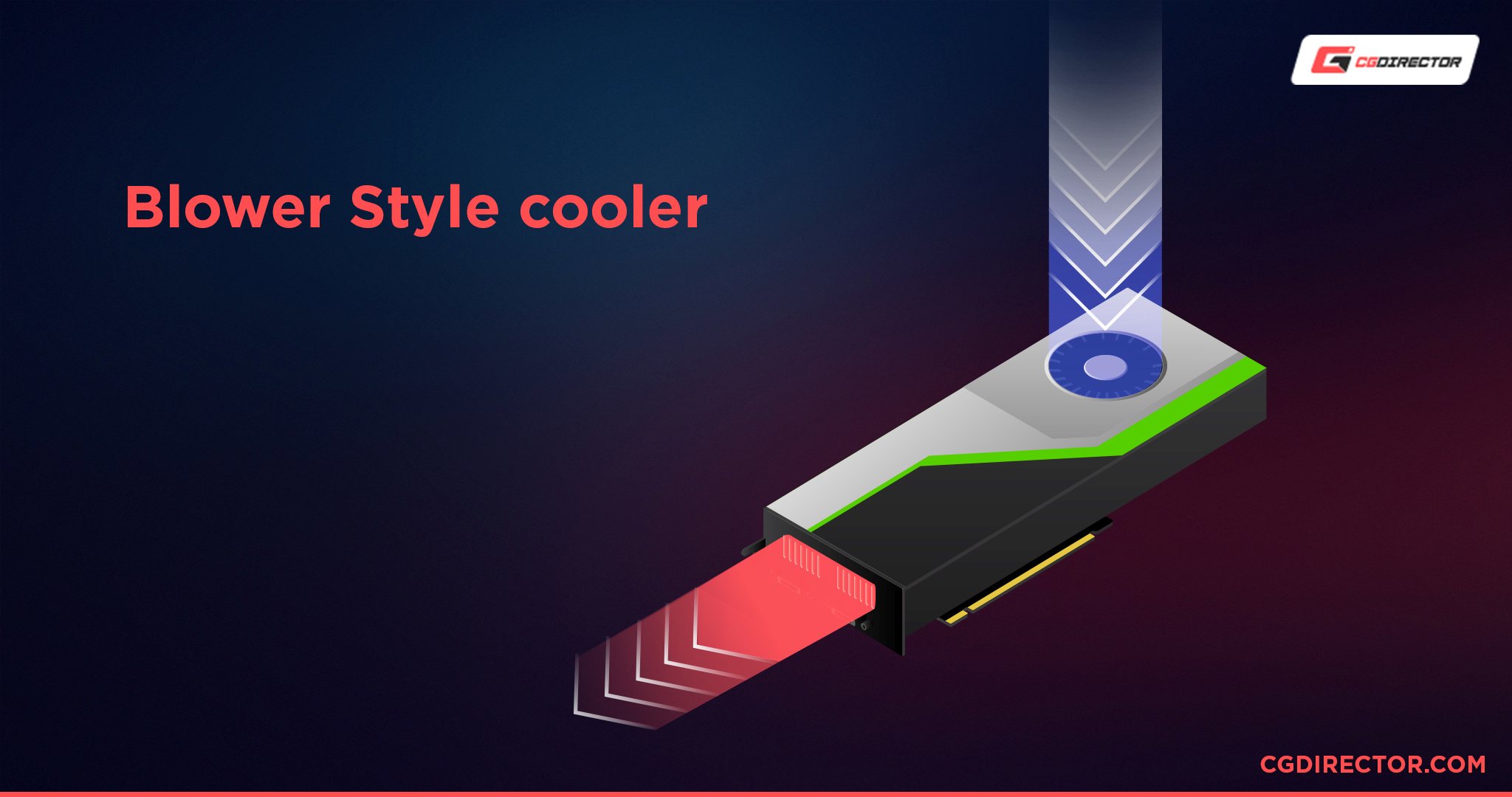
If you’re stacking graphics cards in a multi-GPU setup (or a NVLink setup, if you’re thinking Nvidia) or building in a Mini ITX case, you can achieve some pretty great results with a blower-style card.
Speaking of Founders Edition cards specifically, the RTX 30-series Founders Edition cards are somewhat well-balanced for both scenarios.
Want to learn more about GPU cooler designs? Check out Alex’s full article on Open-Air vs Blower-Style Coolers!
What Makes Founders Edition GPUs Better Than Other GPUs?
So if Nvidia is willing to mark up the price and amp up the advertising for a Founders Edition graphics card, what makes them so much better than other options?
Founders Edition cards have replaced cheaper reference design cards in the market, and indicate a willingness from Nvidia to compete directly with their partners.
I think it’s fair to say that Nvidia had better be willing to back that up:
Binning
To help answer this question, let’s discuss binning. We’ve mentioned this process in passing earlier in the article, but now it’s time to explain it a little more.
Basically, when any processor (GPU or CPU) is being manufactured, there’s something called a binning process that occurs.
The binning process involves testing each and every chip that is manufactured and “binning” them based on performance.
An interesting thing about binning is that it can sometimes result in entirely new products.
For instance, let’s say Intel tries to make a six-core Intel CPU, but learn during the binning process that two of those cores aren’t working well enough to sell the whole package.
It’d be a waste of good materials to just throw it all away at that point, so instead the CPU is rebranded as a four-core part, the dysfunctional cores are disabled, and the final product is sold to consumers.
In the case of Founders Edition graphics cards, binning is part of the reason why they’re considered a good option.
Since Nvidia is in charge of manufacturing all of its GPU chips, it can selectively bin high-performing chips to use with its Founders Edition graphics cards before selling the others to its partners.
However, this doesn’t mean that every partner card has an inferior chip- many on the high-end are also thoroughly binned.
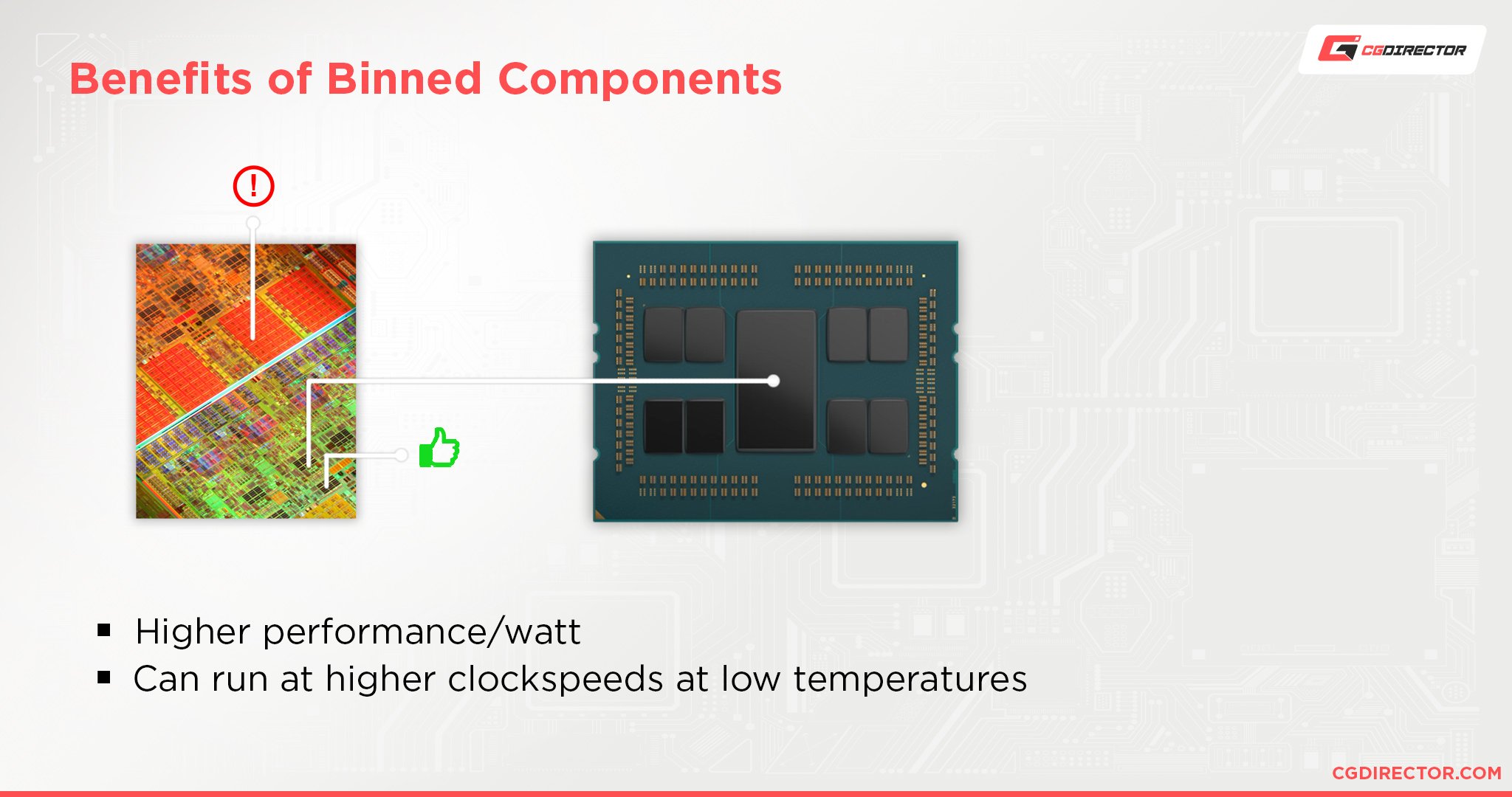
Besides binning, it’s also worth discussing pricing and cooling.
If you’re lucky enough to check out a Founders Edition graphics card when it’s available in a direct sale from Nvidia’s website, you’ll be getting the card at MSRP instead of the dramatically inflated prices of other outlets.
This isn’t usually an option, though, and outside of this scenario, Founders Edition cards can actually be more expensive than alternative options.
Meanwhile, current-gen Founders Edition cards are actually fairly well-cooled, thanks to their hybrid approach to GPU cooler design.
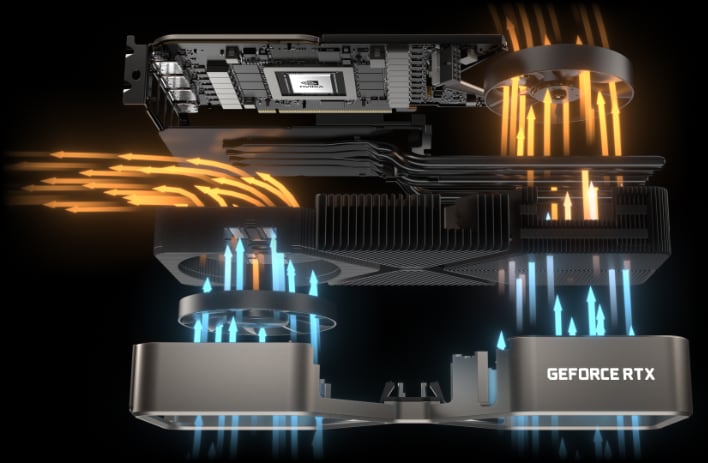
Cooling Setup of Nvidia RTX 30 Series Founder Edition GPUs – Image-Credit: Nvidia
With good binning on top of good cooling, it also makes Founders Edition cards a viable choice for GPU overclocking, which can help enthusiasts squeeze just that extra bit of performance and lifespan out of a graphics card.
Where Do Founders Edition GPUs Falter Compared To Other GPUs?
Now, let’s discuss where Founders Edition graphics cards fall short.
One big issue is pricing, especially if you aren’t buying directly from Nvidia. Even prior to chip shortages, Founders Edition cards came with a price premium over budget options from AIB partners.
During the pandemic, where most cards are sold on storefronts or by scalpers at MUCH higher prices than MSRP, this difference has become a lot less apparent…but it’s not what I would call a win for Founders Edition cards.
Next is actually still raw performance and overclocking potential.
While it’s true that Founders Edition cards are pretty good in this regard still, they don’t quite match up to the highest-end graphics cards from Nvidia’s partners. I’d choose a high-end EVGA RTX 3060 over a Founders Edition RTX 3060 any day of the week, for instance, and not just because of more powerful cooling or a slightly higher overclock.
Founders Edition cards may be straight-up superior to budget partner cards, but when the partners themselves choose to compete with their own binning and cooling…Nvidia doesn’t always come out on top. Thus, is the nature of competing with your own hardware partners, it seems.
FAQ
Are Reference Design GPUs The Same as Founder’s Edition GPUs?
No. While some partners are still putting out reference design GPUs for Nvidia, Founders Edition cards are meaningfully different from the reference cards that Nvidia used to sell themselves.
We’ve discussed why in detail in the article above, but the short version is that a Founders Edition graphics card is meant to directly compete with custom designs from partners rather than provide a cheaper point of entry.
What Alternatives Should I Consider To A Founders Edition Card?
If you aren’t sure about getting a Founders Edition card, or you just want a good idea of what else to consider, you’re in the right place.
First, let’s talk about a few options that become available when you get an Nvidia graphics card from a partner instead of Nvidia.
These options include:
- Smaller versions of the GPU in question.
Not all GPUs have more compact partner versions, but for the ones that do, getting a smaller card that can actually fit in a more compact case may be the better option than a bulkier design from a Founders Edition card or a partner. - High-end cards with better cooling, better overclocking potential, or both.
Especially from brands like EVGA, there are ample options for great Nvidia graphics cards without needing to buy a Founders Edition.
You aren’t gonna liquid cool that Founders Edition, but an EVGA card can come with a liquid cooler! - Full blower-style cards for use in multi-GPU configurations or Mini ITX PC builds.
As discussed earlier in the article, blower-style cooling has its own unique benefits and the current generation of Founders Edition cards still exhaust some heat into the rest of the case.
An informed purchase of a blower-style card can be a better option for many customers.
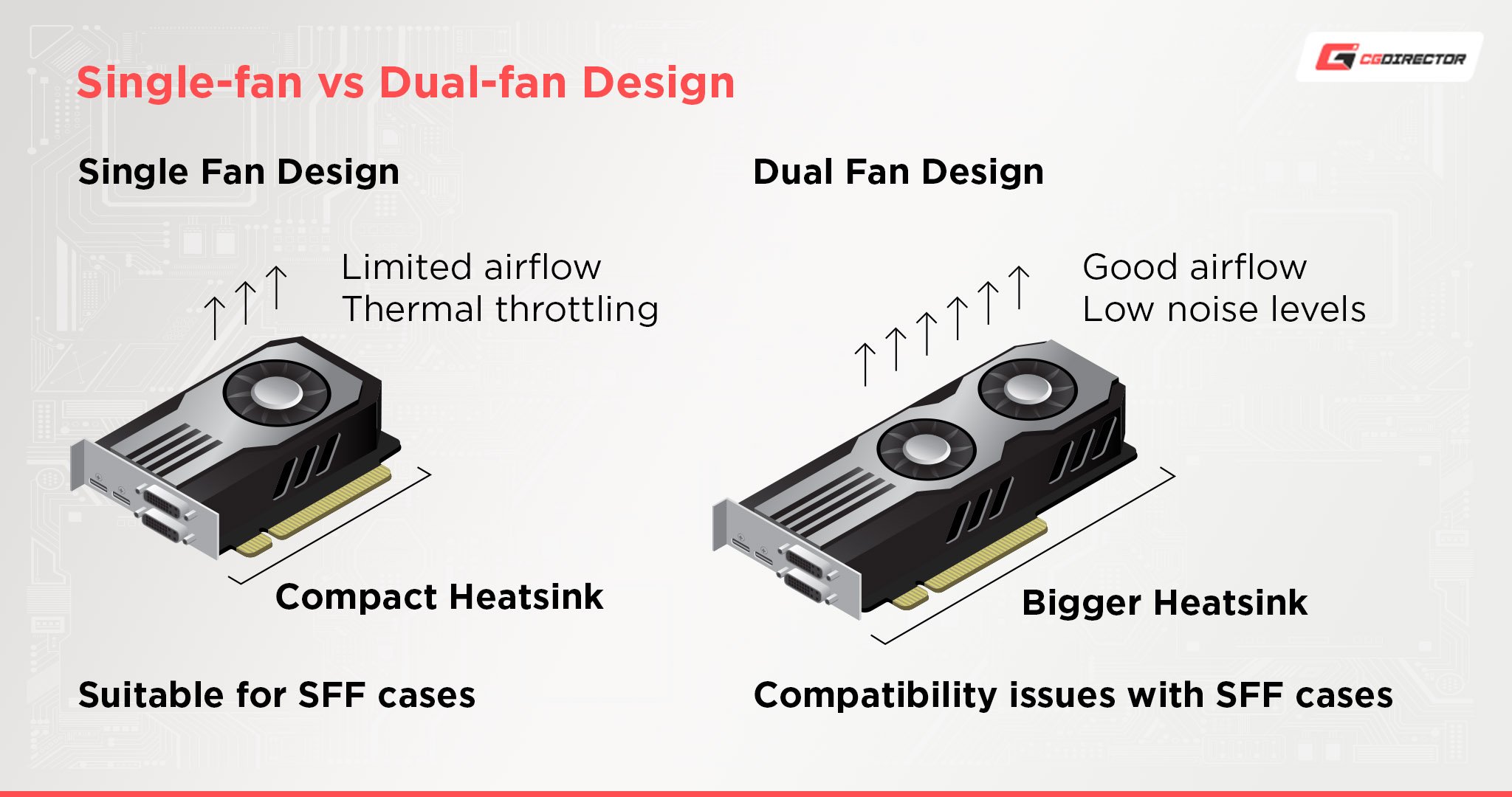
Conclusion
This is about where I’m ready to wrap things up, but before I go, remember that you’re welcome to ask any lingering questions you may have in the comments section.
I’d also like to point you in the direction of Best GPU Brands for AMD and Nvidia for further reading since you’ll get a better idea of the alternative options available to you (compared to Founders Edition cards).
To tie a neat little bow on this whole thing, let’s rewind back to the initial question: are Founders Edition GPUs any good?
Certainly. They aren’t the best by any stretch of the imagination, though.
Do your research and choose the card that’s best for your particular needs- that could be a Founders Edition card, but it could also be any number of competing alternatives.
Over to You
If you have any other questions about founders edition GPUs, let us know in the comments below or our forum!
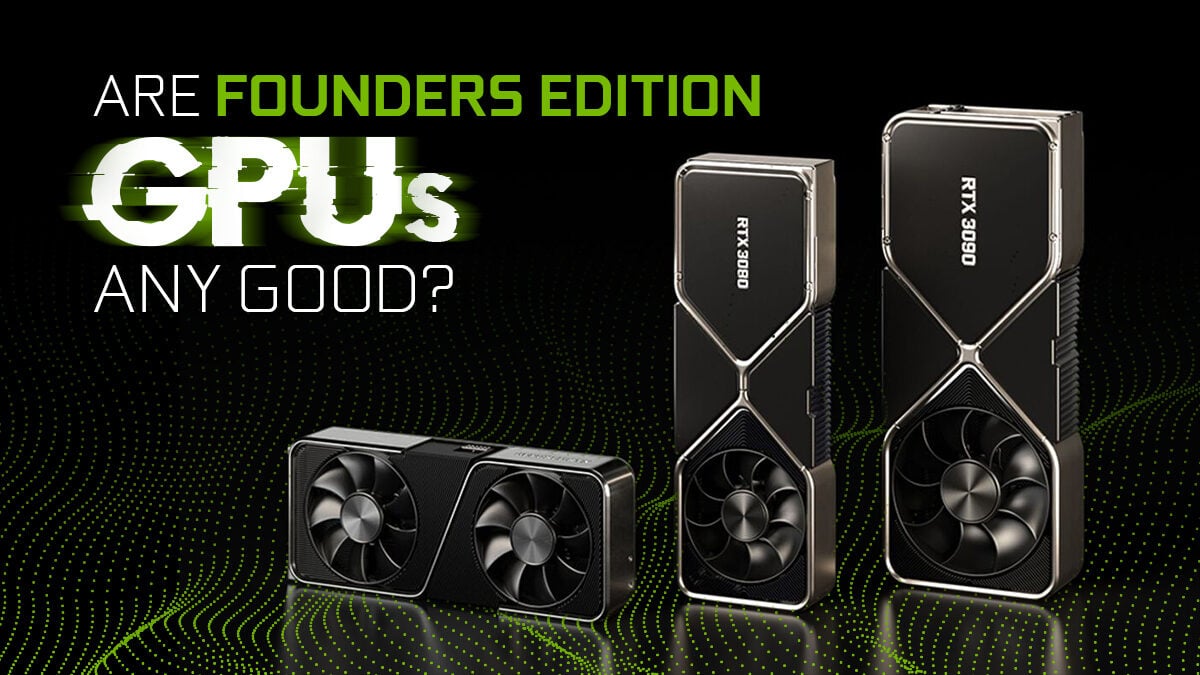
![Guide to Undervolting your GPU [Step by Step] Guide to Undervolting your GPU [Step by Step]](https://www.cgdirector.com/wp-content/uploads/media/2024/04/Guide-to-Undervolting-your-GPU-Twitter-594x335.jpg)
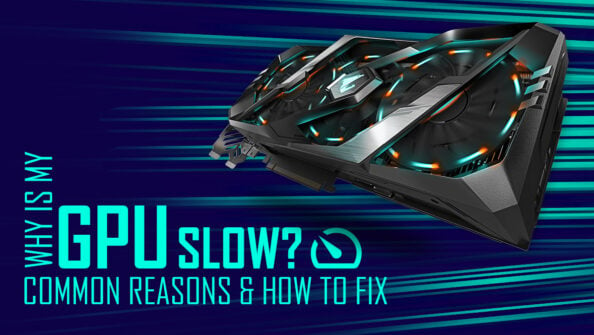
![Are Intel ARC GPUs Any Good? [2024 Update] Are Intel ARC GPUs Any Good? [2024 Update]](https://www.cgdirector.com/wp-content/uploads/media/2024/02/Are-Intel-ARC-GPUs-Any-Good-Twitter-594x335.jpg)
![Graphics Card (GPU) Not Detected [How to Fix] Graphics Card (GPU) Not Detected [How to Fix]](https://www.cgdirector.com/wp-content/uploads/media/2024/01/Graphics-Card-GPU-Not-Detected-CGDIRECTOR-Twitter-594x335.jpg)

0 Comments